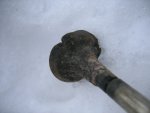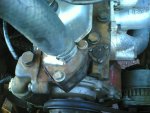Wander
Expedition Leader
Is there a way to ID an unleaded head on a 2.25 petrol series motor?
I'm trying to figure out if my IIa was converted or not. The guy I bought it from only had it for a brief time and it was part of a trade so he never had to add gas nor does he know iif the head was changed. I could probably track down the prior owner to find out but if there is an way to spot the head that would be much easier.
If it's not the unleaded head, what do all use as an additive to keep everything clean(ish).
I'm trying to figure out if my IIa was converted or not. The guy I bought it from only had it for a brief time and it was part of a trade so he never had to add gas nor does he know iif the head was changed. I could probably track down the prior owner to find out but if there is an way to spot the head that would be much easier.
If it's not the unleaded head, what do all use as an additive to keep everything clean(ish).


